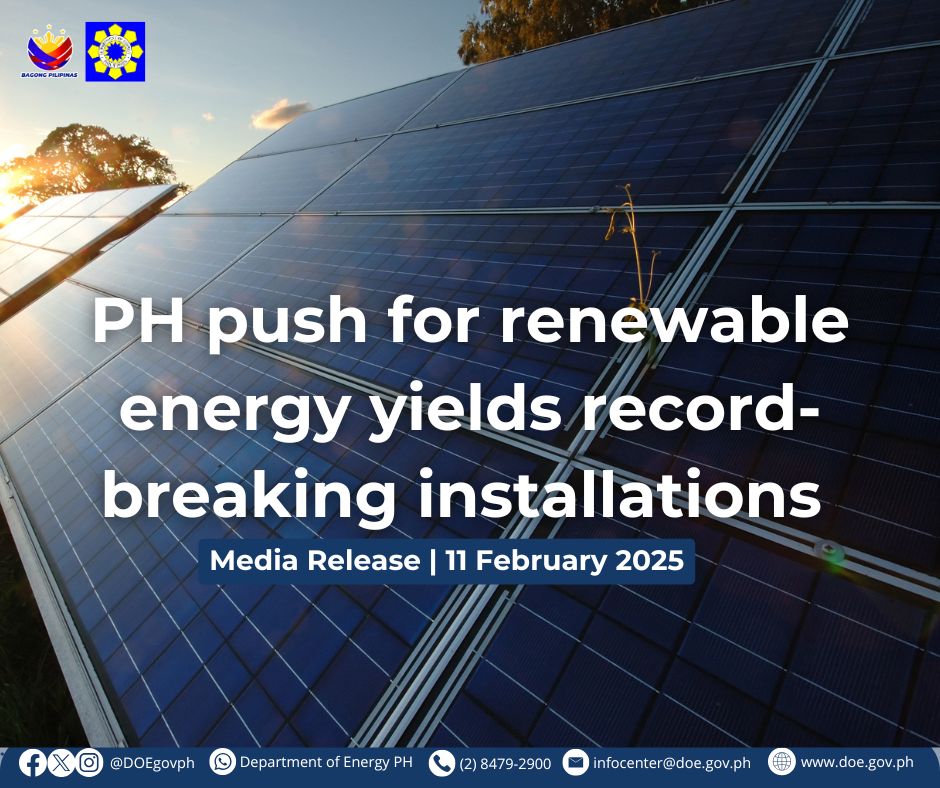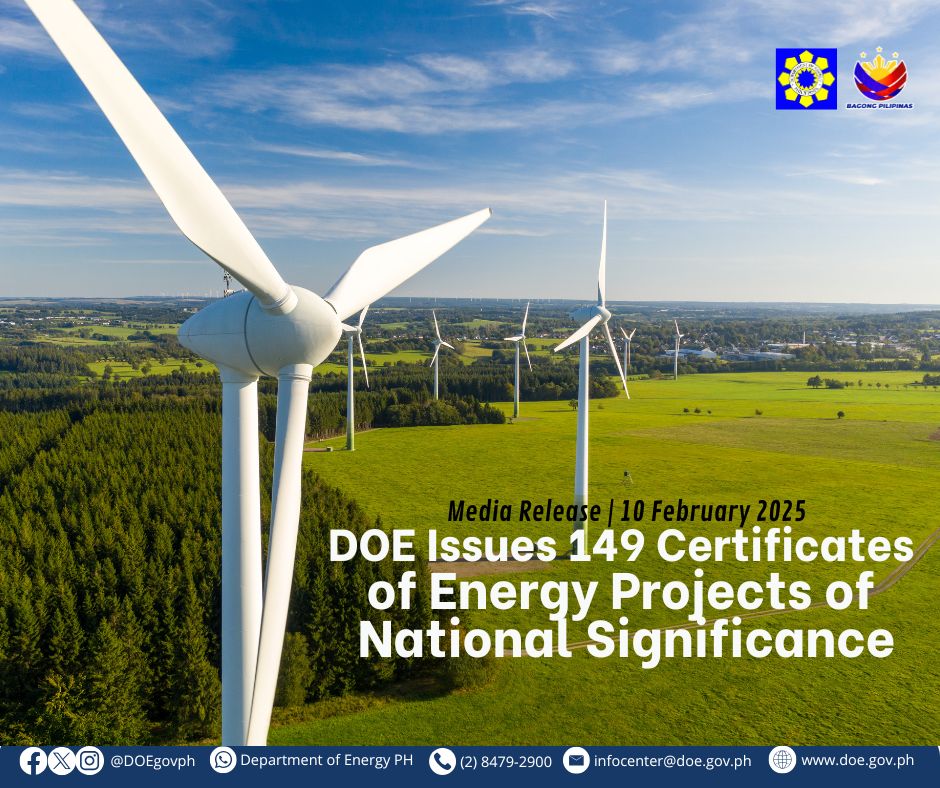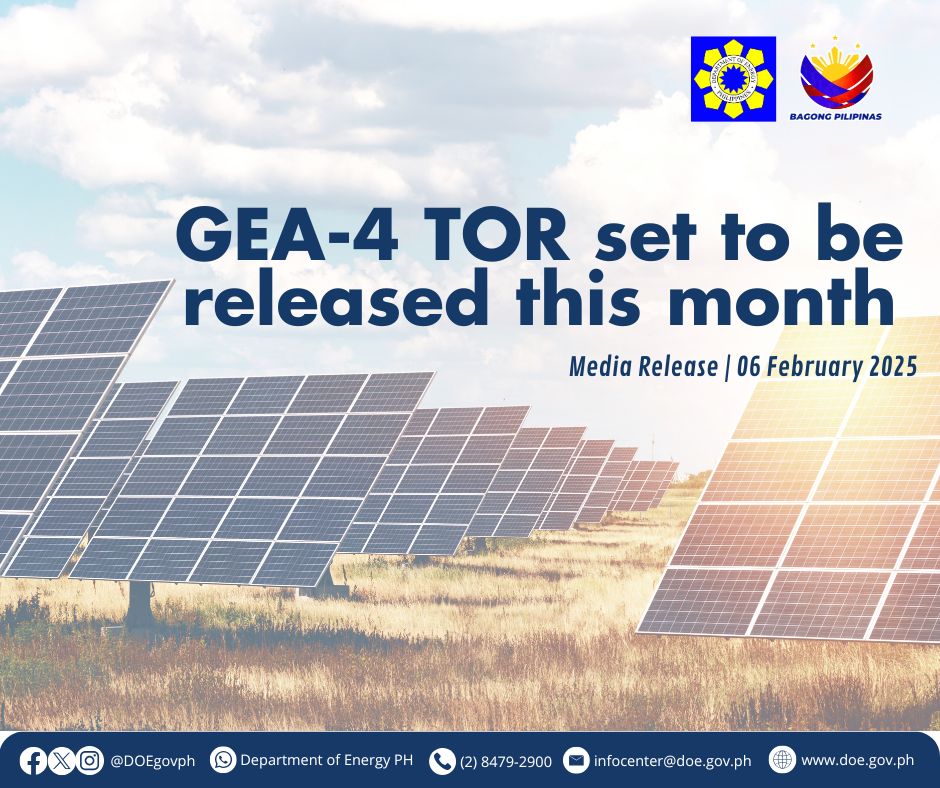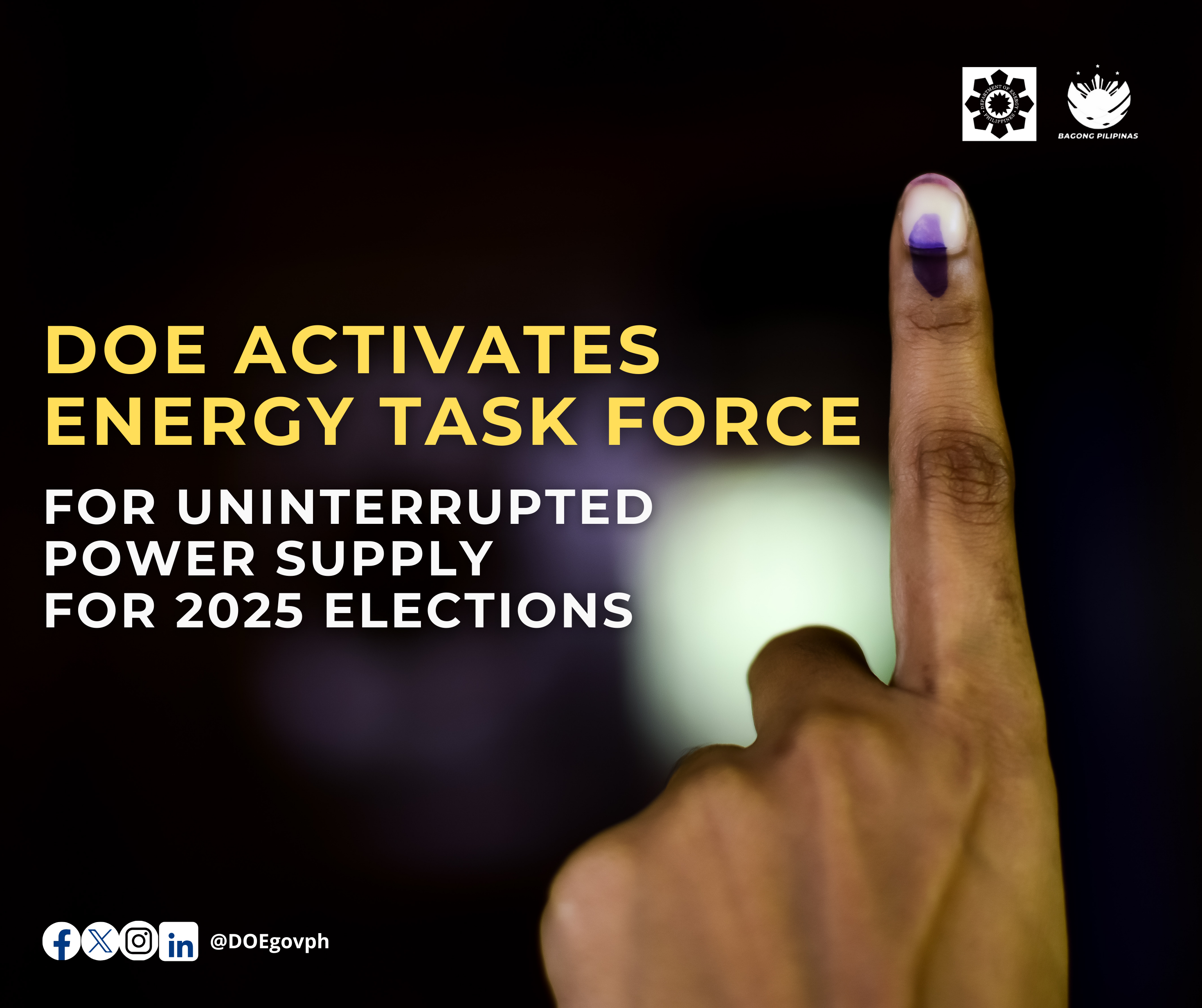PH push for renewable energy yields record-breaking installations

The Philippines’ intensified efforts to integrate renewable energy into the grid have resulted in record-breaking capacity additions in 2024, surpassing the total renewable energy capacity installed over the past three years combined, the Department of Energy (DOE) announced.
In 2024 alone, the country added 794.34 megawatts (MW) of new renewable energy capacity, exceeding the combined 759.82 MW installed in 2021 (230.10 MW), 2022 (328.18 MW), and 2023 (201.54 MW). Additionally, the Net-Metering Program contributed around 141 MW from 2015 to 2024, while renewable energy projects for own-use from 2009 to 2024 generated at least an additional 252 MW.
These capacity additions have helped strengthened grid reliability and resilience, providing a more stable and secure energy supply for Filipino consumers. This achievement is a direct result of strong policy reforms, streamlined regulatory processes, and the government’s steadfast commitment to advancing clean energy. Investment-friendly mechanisms have also played a critical role in attracting substantial private sector participation, further accelerating the country’s transition to renewable energy.
"The unprecedented growth in renewable energy capacity last year is a testament to the effectiveness of the government’s renewable energy policies and the unwavering commitment of the administration of President Ferdinand Marcos Jr. to chart a more self-reliant energy future for the Philippines," Energy Secretary Raphael P.M. Lotilla said.
Key policy and regulatory enhancements have contributed to this rapid capacity addition. Among these, the integration of all applications and permitting processes for energy projects, including renewable energy, in the Energy Virtual One-Stop Shop System has improved the efficiency of application processing, allowing investors to navigate approval procedures more seamlessly.
Additionally, the increase in the minimum annual incremental renewable energy requirement from 1% to 2.5% starting 2023 for grid-connected mandated participants or the Renewable Portfolio Standards has led to a stronger demand for renewable energy, encouraging more capacity to be added to the grid.
Factors such as declining technology costs have also contributed to renewable energy capacity addition, as the significant decrease in the cost of solar panels --- driven by economies of scale and technological advancements --- has made renewables more competitive with fossil fuels.
To maximize the benefits of these renewable energy capacity additions and prevent stranded power generation, the DOE is continuously monitoring critical transmission line projects to ensure they are completed on schedule and can support the integration of additional renewable capacity. Further, the DOE is working with the Bangko Sentral ng Pilipinas and multilateral agencies to explore the use of innovative financing instruments that support environmentally sustainable projects, including renewable energy, energy efficiency, climate adaptation, and other low-carbon solutions. Additionally, the DOE is conducting investment promotions overseas to attract foreign investments.
"This milestone underscores our collective determination to accelerate the clean energy transition. With sustained collaboration, strategic investments, and policy support, we are confident in achieving our target of increasing the renewable energy share in the power generation mix to 35% by 2030 and 50% by 2040," Secretary Lotilla added.
As the Philippines continues its aggressive push for renewable energy, the DOE remains committed to implementing policies and initiatives that will strengthen energy security, attract investments, and ensure a sustainable and resilient power sector for future generations. ###




